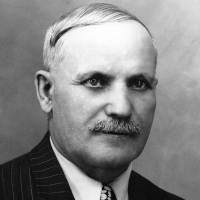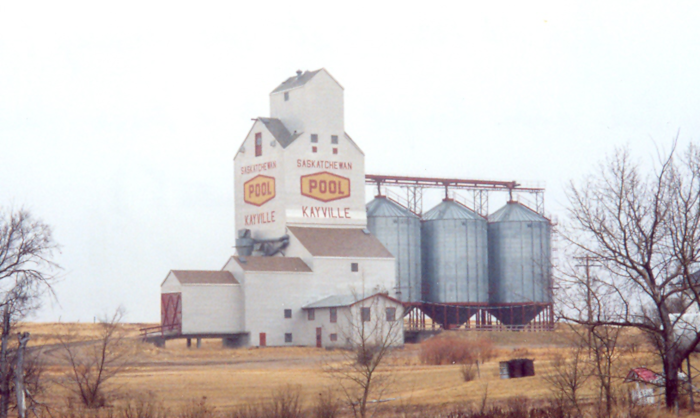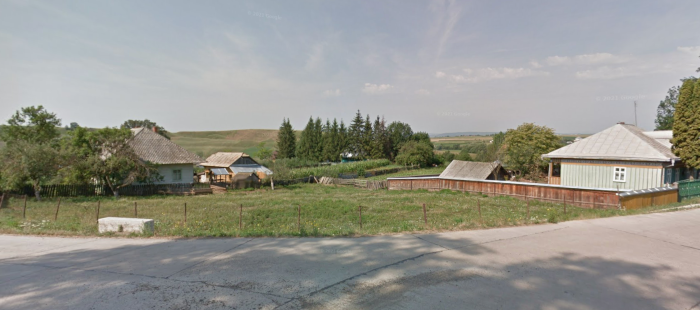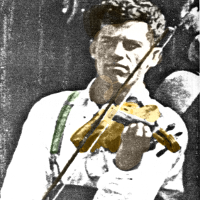Nicolai was born in 1886 and raised in Liteni, Suceava, Romania, the first-born son of Timofti & Elisaveta Cojocari. He began life as a Romanian peasant but chose a different life in Canada.
Nicolai’s life
Born
Nicolai was born on about Thursday, 28 January 1886, in Liteni, Suceava, Romania, Nicholai “Nick” was the first-born son of Timofti Cojocari and Elisaveta “Elizabeth” (Cosmachuk). He grew up with eight siblings – five brothers and four sisters.
What’s in a name
The given name ‘Nicolai’ is believed to be the Romanian version of ‘Nicolas’ originally derived from a combination of two Greek words meaning ‘victory’ and ‘people’. In turn, the name means “victory of the people.”.
We know that Nicolai’s parents were members of the Romanian Orthodox Church and chose his name by either naming him in someone’s memory or following the tradition of selecting given names from the Bible. The name has been widely used in countries with significant Christian populations, owing in part to the veneration of Saint Nicholas the patron saint of sailors, merchants and others or a reference to a figure in the Bible, Nicolas, a native of Antioch and a convert to the Jewish faith
Romanian Shepherd Wearing Sheepskin Cojoc ca. 1916-1918
The surname ‘Cojocari’ is derived from Slavic kožuh(ar), from the root of kožuh, meaning ‘fur’. It is a Romanian/Moldovan surname generally meaning someone with the occupation of furrier (animal skins and pelts) and more specifically someone who makes heavy winter coats or vests which are called ‘cojoc’.
Cojoc are typically made of fur or sheepskin.
Trouble with the law
By the time Nick was about eighteen he had already been in trouble with the police in his village. We don’t know anything about what he may have been accused of but the local policeman Saudarie Ceasarwe in Liteni was apparently familiar with Nick and his younger brother John.
Leaving Romania (1907)In about 1906 Nick likely decided, like many young people in that region of Romania, to escape the turmoil in Romania and travel to Canada to make a new life. The first months of 1907 saw a peasant revolt begin in the Suceava region of Romania flare and then be put down by the army. He may have been looking for a more prosperous life, avoiding conscription into the army or a bit of both.
“Nick” Cojocari, now about twenty-one (21) years old and still unmarried arrived in North America in February 1907 through the port of New York, USA.
Joined by Brother John (1907)A couple of months later, in May 1907 Nick’s eighteen year old brother John and his wife Maranda also arrived in North America through New York, USA.
We can assume that Nick, John and Maranda lived together for a period but only for about a year as John and his wife had taken up residence in Regina, Saskatchewan by the next year (1908). By 1909 Nick had taken up residence in Montreal, Canada where he lived amid the small Romanian community he found there.
Joined by Brother Costan (1909)At some point in 1909 nineteen year-old Constantine “Costan”, the third son of Timofti and Elisaveta, joined his brothers to make a new life in Canada. We might assume that he stayed with his brother Nick in Montreal for a time or perhaps he travelled to join his brother John who was already in Saskatchewan but we do not know for certain.
Marriage (1909)
It was perhaps in the summer of 1909 that a twenty-three (23) year old Nick first met twenty-one (21) year old Garafira “Grace” Stratinar. We do not know if they knew each other in Romania. We do not know if they met in New York or Montreal. The story of their wedding and the subsequent birth of their first child, George, on May 10, 1910, has some twists and turns.
As the story of George’s birth goes, his father Nick, while living in Montreal, Quebec during 1909 or 1910, was preparing to marry a woman who was not Garafira . Before the wedding took place a some-months pregnant Garafira found Nick Cojocari in the area of Montreal where most Romanian immigrants lived and gave him the news that he was going to be a father. Nick’s approaching wedding to the first woman was now off and being wed to Garafira was now on! Nick and Garafira were married in Montreal during the final months of 1909 with their son George being born in the spring of the following year.
The story sounds so much more dramatic if you imagine that it took place at the church at the moment when Nick was about to marry the other woman. At the instant when the priest asks if there are any reasons why the two people should not be wed the heavy double doors of the church bang open allowing a swirl of snow to enter and the form of a very pregnant Garafira to be revealed in the doorway. Garafira waddles in protected from the biting winter winds by a heavy coat and clothes no better than rags and cries, “Stop the wedding!!”. With the church pews filled with guests, all faces turn in unison with surprise to regard the figure now entering the church and walking purposefully up the aisle toward the startled bride and groom. That’s probably not what happened but as a kid that’s pretty much what I imagined upon hearing the story.
Birth of Their First Son (1910)Following George’s birth in the spring of 1910 his parents relocated to Saskatchewan where he would be raised, first on their original homestead and later on the better land which they purchased to the west where they built their grand house around 1933.
Onward to Saskatchewan (1910)With their first-born baby Nick and Garafira left Montreal in 1910 and travelled west to Regina, Saskatchewan to join Nick’s brother John. Much had changed since the brothers had last seen either other with Nick’s marriage and both having new babies. John and Maranda had welcomed their first child, Wesley on January 1, 1910.
John had been worked as a labourer on the new Saskatchewan Legislature building which had just begun construction when he had arrived in 1908. John has presumably used some of the money he earned to purchase a quarter-section homestead southwest of Truax, Saskatchewan (NE-02-10-23-W2) in 1909.
Nick joined into the labour on the Legislature as well. Shortly after, Nick was able to purchase a quarter-section homestead right beside his brother John on NW-02-10-23-W2 and then later a second quarter-section beside that on NE-03-10-23-W2. Owning land was something they would never have been able to do in Romania as all land was owned by aristocrats and only leased back to peasants. They must have been very proud to be land owners.
Costan was able to secure a homestead just down the road (SW-10-10-23-W2) from his brothers.
Joined by Sister Rachel (1911)Around the year 1911 Nick’s sister Rachela “Rachel”, the sixth born child of Timofti and Elisaveta, left Romania to join her brothers. She made the journey to escape a marriage to a much older man that had been arranged for her. She fled with the blessing of her father. We will assume that for a time she lived with her brothers and their families.
On Trial for Manslaughter (1913)In 1913 during the evening of August 28 Nick, his brother John and a friend named Mordari Puscar were charged with manslaughter and accused with causing the death of a neighbour, John Paicu. The three were tried twice for the crime and each time the charges were dismissed. It was revealed in the court documents that Nick and John were leaders of a criminal element in the region and that people were afraid to give testimony against them in the opinion of the RNWMP who investigated. What criminal activity they were rumoured to be responsible for was not documented.
Nick and his brother John stood over six feet tall which was a very imposing height for the day. Nick and John were also built with generous frames. In old photos they very clearly towered over people of the day. Life was rougher in the beginning of the 1900’s and their land could still be considered a new frontier away from the law and civility of city life. Perhaps they did take advantage but maybe no more so than people did in surrounding regions.
Following the final trial on August 11, 1914 we hope that Nick followed a straighter path. Certainly he seemed to develop into a better citizen. When the charges were dropped Nick was a father of four with a fifth on the way!
Making a living
Nick Cojocari was a farmer and horse dealer and had his own registered stallions. He owned a threshing outfit and cook car and Garafira went along when possible to do the cooking. They raised their own sheep and spun the wool. Mrs. Cojocar was midwife to many of the children in the community. Raising as many children as they did they needed to work hard to give them good lives.
Death of son Dimitri (1916)
Around 1916 Nick and Garafira mourned the loss of their third-born son Dimitri “Dan” at the age of four to mumps. Even though child mortality was not unusual at the time this must have been a devastating loss. A scant three years later in 1919 Garafira gave birth to twins, Peter and Paul, their ninth and tenth children who both died within the year.
Death of father (1918)
Nick would have received a letter from home in 1918 telling him that his father Timofti had passed away at the age of fifty-eight. We do not know if Nick was ever able to travel back to see the family that remained in Romania. Certainly that would have been a expensive undertaking and with World War I raging (1914-1918) possibly dangerous as well. It is likely that when Nick said goodbye to his family eleven years earlier that he suspected he might not see them again.
Brother Costan moves east (1923)
Nick’s brother Costan must have thought that his fortunes lay elsewhere as he, in about 1923 moved to Detroit, Michigan, USA likely to seek work in the factories. In February 1924 his wife Cleofira and seven children joined him. Over the coming years Nick would travel to visit his brother in Michigan. This reveals a close sibling relationship.
Death of mother (1933)
Fifteen years earlier Nick received word of the death of his Father, in 1933 it would be news of the death of his mother Elisaveta at the age of sixty-eight. Again, we do not know if Nick ever returned home again. Certainly by this point he could probably have afforded it but with so many children yet to raise he would have likely made the journey on his own and it would have been for a small number of months. It’s doubtful for a man with so many responsibilities to make that decision easily.
Moving to better land
In the early 1930’s Nick and Garafira’s home burnt down. They decided to move to a farm two miles north of Kayville. This new farm was a convenient location as it was closer to Kayville, also across the road from their oldest son George’s farm and only 3.5km/2mi from Saint Peter and Paul Romanian Orthodox Church.
By 1934 Nick and Garafira had completed construction of a new house and barn on the new location for themselves and the (around) eleven children still at home. Judging by photos the buildings were large and ornate. The two-story house had a cement foundation with a bit of a basement. There were many windows and Romanian-style scroll-work on the gables, a very impressive construction compared to many in the area. It had to be large for family gatherings! With the four oldest children already married and eight grandchildren by 1934 a gathering of immediate family in the new house would have been twenty-nine people!
Sister Rachela moves east
At some point by the mid-thirties Nick’s sister Rachela had married Gregory Creotor (“Taylor”) and had moved to Kirkland Lake, Ontario. She would eventually move to Detroit, Michigan, USA alone. This would leave Nick and John in the west and Costan and Rachela in the east.
Some children move east (~1934)
By the late 1930’s the Great Depression combined with a prolonged drought was making the economics of farming very difficult. A majority of Nick and Garafira’s children moved to Windsor, Ontario and Detroit, Michigan as did many of his brother John’s adult children. As bad as the economy was overall, it must have been just a little bit better to the east. At least brother Costan had lived there for the previous decade and could provide solid advice on what life was like there. Most of the people who moved east ended up staying there. It must have been hard for Nick and Garafira to see them go knowing that they might be separated forever.
Kayville Community Hall Co-op Association President (1940)
The Kayville Community Hall Co-op Association was formed in 1940 with Nick Cojocari as president. The association bought Eftim Ritco’s poolroom and bowling alley (which Eftim had moved into town in 1924) and renovated it to allow for seating and dancing. The village now had a social centre for dancing and celebrations!
Music and candies in the air
Nick remained fond of Romanian music for this whole life and was skillful at playing it on a flute called a Caval/Kavel.
In the early 1940’s Nick’s granddaughter Geana Cojocar remembers waiting for her grandfather to arrive home as she played with the many cousins and young aunts and uncles that gathered at the house. When her grandfather would arrive home they would all rush to greet him at the door and he would pull handfuls of peanuts or candy out of his pockets and fling them into the air. The children would greedily rush about collecting the treats as they clattered to the floor!
WWII Death of son Dan (1944)
In 1943 Nick and Garafira would have greeted the decision by their nineteen year old son Dan to join the army with pride and fear. Other men in the district would also have been joining the army to aid the World War II raging in Europe also. Five months after enlisting and completing his training in November 1943 he was granted a short leave from the army base in Manitoba and we must assume that he travelled back home. He would not return home again. Following the D-Day invasion Private Cojocar landed in France and was killed in the heavy fighting around the city of Caen on Aug 8, 1944 and is buried there.
Retirement (1946)
With all of their fourteen surviving adult children now on their own, Nick and Garafira retired and moved into the village of Kayville in 1946.
Following their retirement Nick and Garafira were able to spend some of the winters in the warmer climate of Windsor, Ontario and Detroit, Michigan.
Move of Saint Peter and Paul Romanian Orthodox Church (1947)
Nick and Garafira attended the Saint Peter and Paul Romanian Orthodox Church. Nick was involved on the church board and worked as Secretary at one point. In 1947 Nick was one of the supervisors of the move of the church from its original location 7km northwest of the village of Kayville to its present location west of the village of Kayville. The original church location had been 3.5km/2mi of Nick and Garafira’s farm. Seeing the church moved into the village where they now lived must have been very convenient and perhaps even motivated by Nick’s influence.
In the church yard of the Saint Peter and Paul Romanian Orthodox Church Nick and Garafira had a monument built to honour their son Dan who was killed in WWII.
Declining health (1958)
Nick suffered a stroke in 1958 which left him severely weakened. He spent a period of recovery in the hospital in the town of Bengough. His sons were able to install pulleys and ropes on a track system in the ceiling so that Nick could move himself in and out of bed and his wheelchair. A touching photo exists showing that his children who have moved to the Windsor/Detroit area travelled to see him en masse during his decline.
Memory eternal (1959)
Nick passed away October 18, 1959 at the age of seventy-three and is buried in the cemetery of the Saint Peter and Paul Romanian Orthodox Church in Kayville. He had been married to Garafira for fifty years.
Nick was survived by his wife Garafira, fourteen children, twenty-seven grandchildren and ten great grandchildren.




